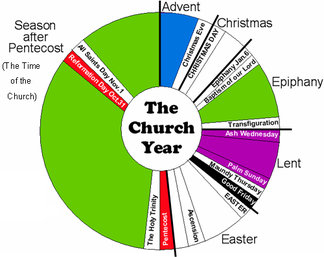Technology
God has always provided means by which the Gospel is proclaimed throughout the world. From the stone tablets which Moses brought down from the mountain, to scrolls, to bound books, the Word of God has been recorded and passed from generation to generation.
Is this ability to communicate across generations part of being created in God’s image? Consider, if you will, even the most intelligent animals who have the ability to communicate with others of their species, if in the same area, cannot save their thoughts for others at another time or place to receive.
Spoken and written language seems to be an innate part of our being. Children learn thousands of words and abstract concepts before they begin school. In fact, it seems in some ways our learning stops when we are enrolled in educational institutions. But that is a topic for another time.
The illustration I chose for this blog entry I created for the textbook I wrote on computer applications. We move from ideas to some sort of language. That language, be it spoken, written, video, or movement, is transmitted via some sort of media — the wave form. When the message is received, it is decoded by the person receiving the message. The receiver can then use the idea for their own purposes.
Time and space are not barriers for communications. Moses wrote the first five books of the Bible around the year 1,400 BC. Although the ancient scrolls are no longer in existence, copies exist which are almost 2,000 years old. Fragments of Genesis were found with the Dead Sea Scrolls, which date from 200 BC to about 100 AD. Though the book was written 3,400 years ago, we study it today. Indeed, the first three chapters of Genesis are still highly controversial.
There are authors who are using new technology, computer communications, to further the proclamation of salvation by grace through faith for the sake of Christ. While I am content to use a website to publish my sermons and a few papers, and to create this blog, there are pastors in the Lutheran Church — Missouri Synod who go well beyond these feeble attempts to use technology. I’ve not mastered video production or podcasts, mostly because of time. These pastors, however, make good use of video and audio recordings.
May I call your attention to Rev. Bryan Wolfmueller, who now is serving congregations in Austin, Texas. An accomplished author in his own right, he also has been republishing books on Lutheran theology from the public domain. His website, https://wolfmueller.co/, goes in to a lot more detail.
Pastor Wolfmueller’s desire to republish the older Lutheran theological works shows that neither time nor distance can stop the truth from being proclaimed. I particularly have enjoyed studying The Doctrine of the Evangelical Lutheran Church by Heinrich Schmid, as published in English in 1876. Yes, the free PDF of this work was excellent, but I much prefer the hard copy I purchased from https://Lulu.com. Because of Pastor Wolfmueller’s work, I can enjoy a “golden oldie” as part of my daily studies of the Word of God.
We give thanks for those who bring us the good news of salvation by grace through faith for the sake of Christ. Be it using videos to explain theology, or recorded lectures, or by bringing us the wisdom of our theological fathers, faithful people use the gifts God has bestowed in this time and place.
From my earliest days working in the computer rooms in the Chicago area beginning in 1969, to writing this blog while sitting in the mountains of Colorado, I have been part of the growth of this technology. I am amazed at the strides we have made in 50 years, and that this technology is now used to proclaim Christ and Him crucified.
I wonder what technology will look like in another 50 years?







